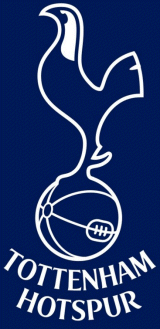
TOTTENHAM HOTSPUR F.C.
Founded: 1882
Also Known As:
HOTSPUR (1882-84)
TOTTENHAM HOTSPUR (1884-)
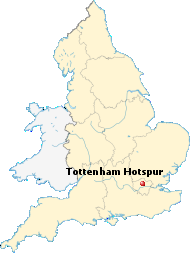
CLICK ON THE MAP TO
VIEW ENLARGED MAP
|
TOTTENHAM HOTSPUR F.C. (Football Club)
Included Info: Brief History, Club/Stadium Info, Team Jersey & Much More...
BRIEF HISTORY of TOTTENHAM HOTSPUR FOOTBALL CLUB
(reproduced from 'Wikipedia' pages)
At first the club was called Hotspur, having been formed in 1888 by a group of grammar-school boys.
They were not elected to the Football League until 1909, but by then Spurs had already won their first
FA Cup. In 1901 they beat Sheffield United in the final, thus becoming the only non-league side to win
the tournament after the formation of the Football League. Tottenham were relegated immediately after
the war, but returned to the top flight at the first attempt and then won the FA Cup in 1921. After
finishing runners up in the league the following season, Spurs slipped down the table; they were
relegated again in 1928 and also - after a brief, two-season return to the top flight - in 1935.
After the war, under the progressive management of Arthur Rowe, Spurs become one of the most attractive
sides in England. They were promoted in 1950 and won the club's first championship in spectacular style
a year later. After finishing as runners up in 1952 and 1957, a third title was won under Bill Nicholson
in 1961 - and this time Spurs added the FA Cup. To Nicholson, glory was as important as victory. His Spurs
side combined the two: in that Double season they romped to the title by eight points, scoring 115 goals
in 42 games, and their 11 consecutive league wins at the start of the season is still an English top-division
record. Their team included the great Danny Blanchflower and Dave Mackay, and in the summer of 1961 they
added the supernatural goalscoring talent of Jimmy Greaves, whose 266 goals over the next nine years
remain a club record. Although Spurs were almost omnipresent in the top six in Greaves' time, they steadily
became known as a cup side. In 1963 they thrashed Atletico Madrid win the Cup Winners Cup, and in 1972 they
would become the first winners of the renamed Uefa Cup, beating Wolves over two legs in the first all-English
European final.
There were also triumphs in the FA Cup (1962 and 1966) and League Cup (1971 and 1973), but rioting after a
defeat to Feyenoord in the 1974 Uefa Cup final led to Nicholson's resignation. A hideous few years followed,
including a year in Division Two after a shock relegation in 1977. The man who took Spurs down, Keith Burkinshaw,
revitalised the club and oversaw another productive spell at the start of the Eighties. In 1978 he pulled off
an almighty coup by signing the World Cup-winning duo of Ossie Ardiles and Ricky Villa, adding them to a midfield
that already contained the sublime talent of Glenn Hoddle. Spurs triumphed in the FA Cup in 1981 - when Villa's
amazing solo goal beat Manchester City in a replay - and 1982; then, in Burkinshaw's final game in 1984, they won
the Uefa Cup at White Hart Lane after beating Anderlecht on penalties. There were third-placed finishes in 1985,
1987 and 1990, but the next trophy came in 1991, the fifth consecutive decade in which Spurs had won a trophy
when the year ended in 1. Paul Gascoigne took Spurs almost single-handedly to the final against Nottingham
Forest, but injured himself and was stretchered off. His team-mates recovered marvellously from that, and
going a goal down, to win 2-1.
Much of the Nineties was spent grimacing at Arsenal's success, although 1999 was a successful year: Spurs beat
Leicester to win the League Cup and David Ginola was named Player of the Year. They won the League Cup again in
2008, but the thing Spurs really wanted - Champions League football - finally came their way when, in Harry
Redknapp's first season, they became the first side in five years to break into English football's Big Four.
Almost fifty years on from their last visit, Spurs were back in European football's premier competition, but
an impressive campaign could not be repeated the next two years and Redknapp paid the price for Andre
Villas-Boas to take over.
|
CLUB FACTS & INFORMATION
| Official Name
| --
| Tottenham Hotspur F.C. |
| Club Nickname
| --
| The Spurs |
| Year Founded
| --
| 1882 (135 years ago) |
| English County
| --
| Greater London |
| Current Ground
| --
| White Hart Lane
Wembley Stadium (2017-18) |
| Ground Location
| --
| London, England
Tottenham, area in North London
(London Borough of Haringey) |
| Club's Owner
| --
| ENIC International Ltd. |
| Club Chairman
| --
| Daniel Levy |
| Current Manager
| --
| Mauricio Pochettino |
| Current League
| --
| Premier League |
| Last Season
| --
| Premier League, 2nd place |
HOME COLORS

White & Navy Blue |
AWAY COLORS

Light Blue & Navy Blue |
|
| |
INTERESTING STADIUM FACTS & INFORMATION

WHITE HART LANE
748 High Road, Tottenham, London, N17-0AP, England
OPENED: ......... September 4, 1899
SURFACE: ........ Grass
COST: .............. £100,050 (1934)
CAPACITY: ...... 36,284
RECORD: ......... 75,038 (1938 vs Sunderland)
OWNER: ........... Tottenham Hotspur F.C.
OPERATOR: ..... Tottenham Hotspur F.C.
FIELD SIZE: ..... 110 x 73 yards (100 x 67 meters)
|
|
|
HOME JERSEY
 |
AWAY JERSEY
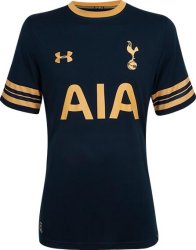 |
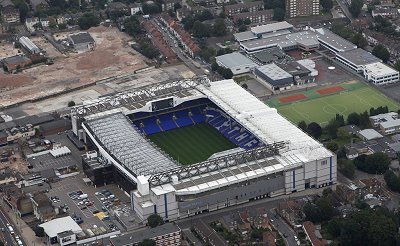
Click On Aerial Photo To View/Download Enlarged Image
|
White Hart Lane (Tottenham) Seating Diagram
Click On Diagram Below To Enlarge View
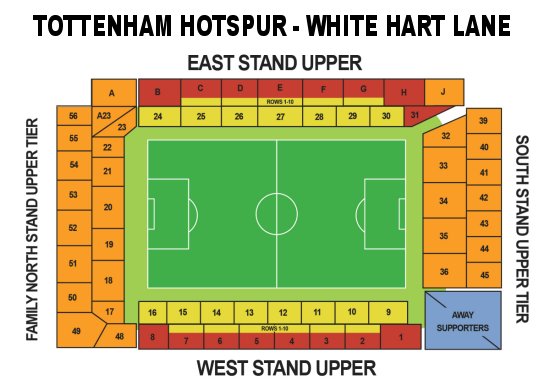
|



TOTTENHAM HOTSPUR STADIUM WALLPAPERS (Free Download)
Wallpaper Size below is 800x600: To Download Bigger Sizes, Click On Any Button Shown Above
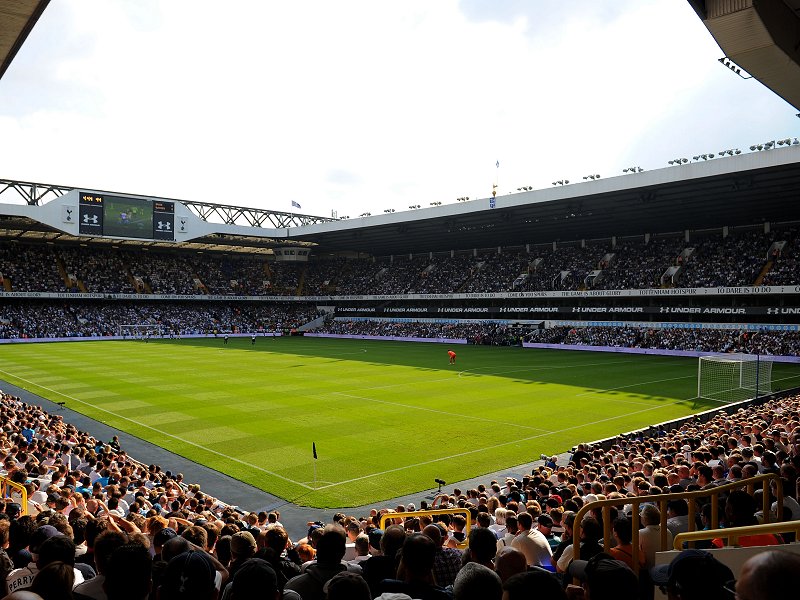
|
|

